Resources
Articles
Dryout Schedule Guidelines
Following proper dry out schedules for refractory castables is essential in maintaining the desired properties. Failure to follow proper dry out schedules and curing processes can result in major failure in your castable. Sometimes simple and overlooked factors can play a huge role in the effects of proper installation. Factors to consider for proper dryout:
- Installation
- Curing
- Temperature Control
- Water Removal
- Dry Out Schedule
Installation or Refractory
One of the most common mistakes when installing refractory castables is the amount of water added to the mix. Over and under-watering will affect the castable changing the desired properties. Changing the water percentage is highly recommended, but if done, should be done by an expert.
Ways to measure water content:
- Water pressure
- Volumetric
- Weight
Under-watering will make it more difficult to cast. High void will result in lower density and thermal conductivity and no voids (uniform sample) you should see higher densities and thermal conductivity but an uncertainty of cold crushing strength and erosion loss.
Over-watering should result in decrease in density, cold crushing strength and erosion loss.
Curing Refractory
The curing process starts when water is added to the refractory castable. Immediately the water will start to react. The curing process may differ from mix to mix. The curing process is mainly affected by the water content, the ambient temperature and the temperature of the castable.
Ideal ambient temperature for curing is between 70°F and 90°F. The curing process can be done outside of the ideal range but consult an expert. Proper heat is necessary throughout the process to remove the water.
Dryout Schedules
The dry out process is a very controlled and is the process of applying heat to refractory lining to remove water. The dry out procedure should be agreed upon with the owner, designer, lining installer, and the refractory manufacturer. Make sure you have the correct dryout schedule for your installation. Dry out schedules change from product to product and may change with the same product when other factors are considered.
Dry out schedules tend to follow two basic models. The first model is a continuous ramp-rate where the temperature increases at a consistent rate throughout the entire process. The second model is a ramp and hold schedule. The temperature is raised a certain temperature then held at that temperature for an extended period of time, then increased again and held at the new rate. These models can reach temperatures up to 700ºF and for as long as 36 hours.
Failure to follow proper dry out schedules can result in microcracks, shorter product life, or refractory failure. Resco Products publishes standard dry out schedules for our refractory castables and can be found on our website. Every project is different and proper consultation with the refractory manufacturer is highly recommended.

Leave a comment